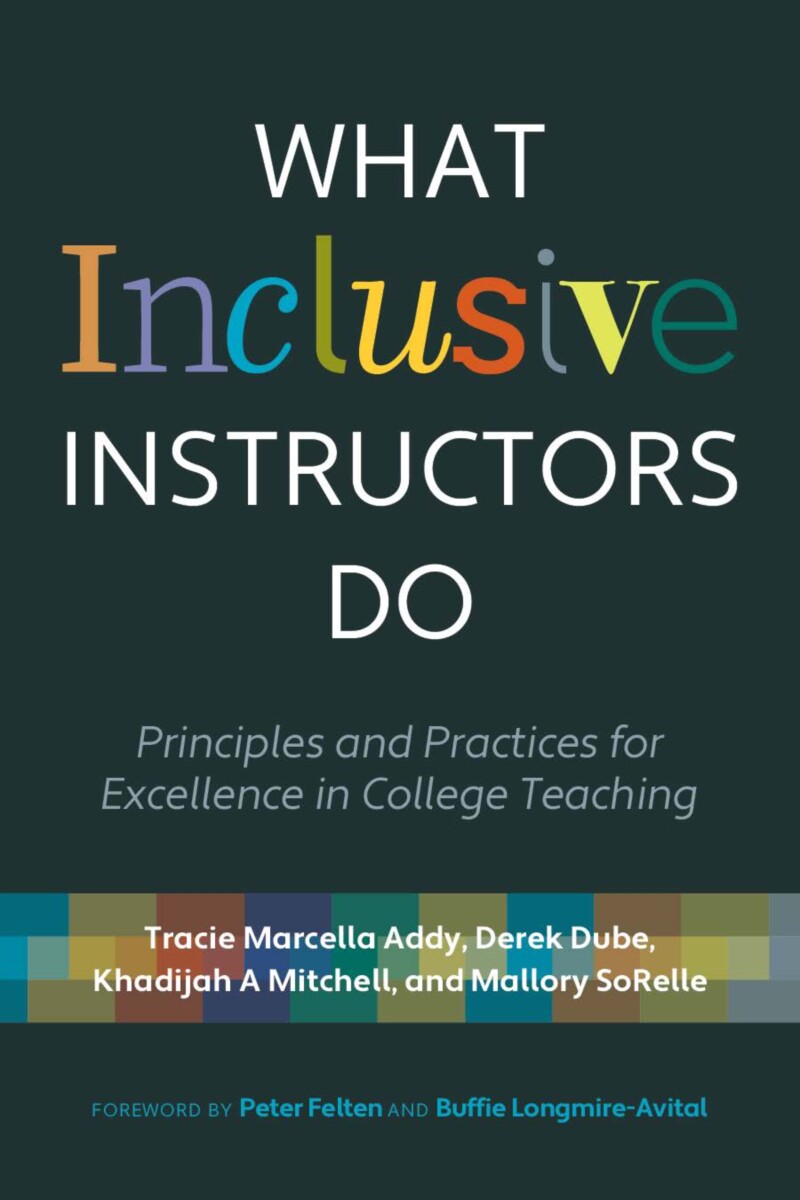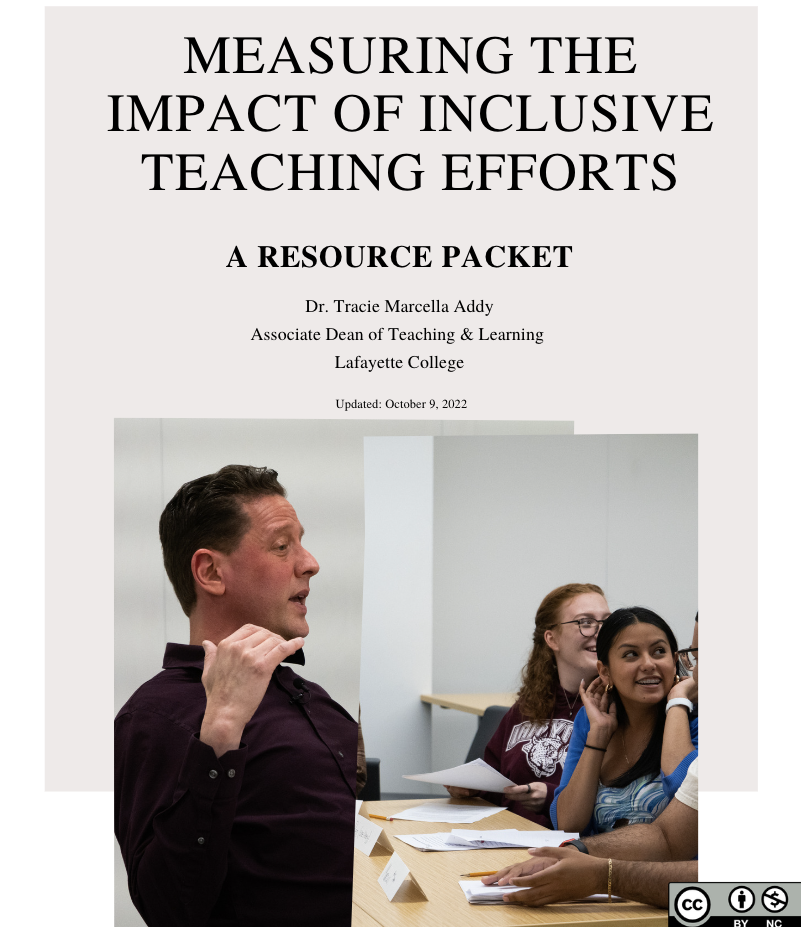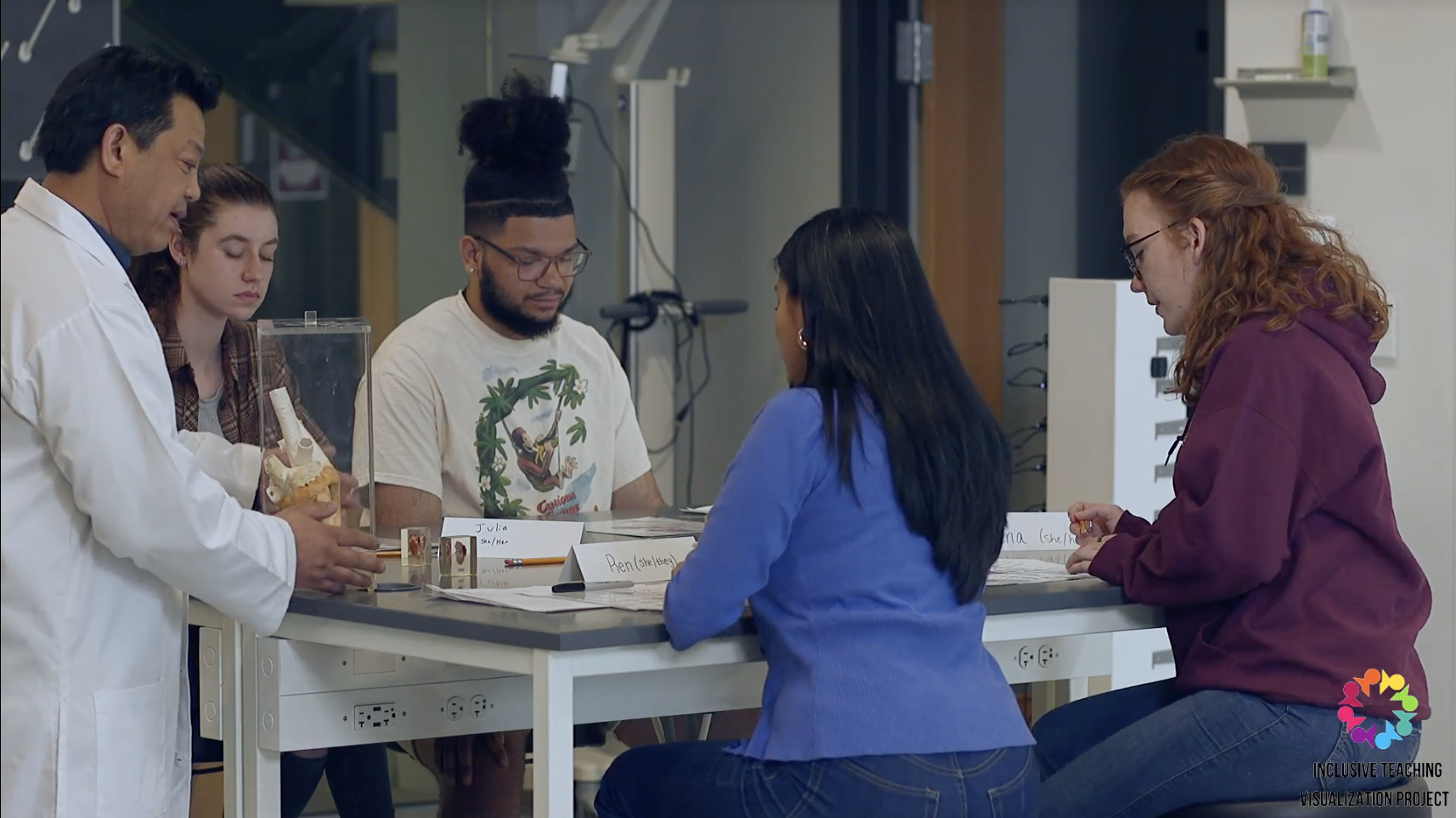A variety of inclusive teaching resources exist including our book What Inclusive Instructors Do, but there is an elephant in the room. This elephant consists of the personal barriers that inhibit the adoption of inclusive teaching. In a study, my co-authors and I found that these barriers can include: lack of awareness, fear, unwillingness to change teaching practices, not feeling responsible, and challenges with facilitating inclusive student-student interactions. These were not the only barriers described by study participants. They also reported a variety of institutional barriers. Here we’ll address the personal ones. Each of these obstacles on their own or in combination can potentially hinder an instructor’s utilization of inclusive teaching practices.
In my experiences I have found that: The adoption of inclusive instruction often involves: (1) becoming aware of the elephant in the room, the personal barriers, (2) making a commitment to modify teaching practices, and (3) trusting processes that unfold after teaching inclusively.
Let’s consider each barrier one by one, unpacking these findings.
Lack of awareness
In the study, we found that this barrier can take on two forms: (1) not being aware of types of teaching practices that are inclusive, or (2) not recognizing that existing practices utilized are exclusionary or inequitable. I continue to observe that instructors who are dissatisfied with their current instructional practices and are willing to learn more about inclusive teaching are in better positions to overcome these barriers. As a case example, an instructor who had been teaching for many years acknowledged their shortcomings with inclusive teaching during a workshop. This vulnerable act of self-disclosure was commendable. The instructor was also very aware that there were many things they did not know about being inclusive and were receptive to hearing recommendations from their colleagues newer to teaching. While I cannot speak as to whether this instructor moved forward on implementing inclusive teaching approaches following the workshop, what was clear was that they acknowledged the elephant in the room, sought to increase their awareness, and were open to change. For many, COVID-19 has revealed the need to teach inclusively given that inequities although there previously, have become more visible. Now is the ideal time to hold onto what has been learned and keep inclusion embedded within all future instruction.
Fear
Instructors have shared feelings of guilt about something they could have done better while teaching because they care deeply about students. I have seen that being fearful in an anticipatory way can inhibit the adoption of inclusive teaching by holding instructors to a standstill. Reallocating this energy into a positive direction, not expecting perfectionism, and espousing a growth mindset has helped many move forward in their inclusive teaching efforts. Also, taking small steps can be transformative, such as changing one thing in a course to advance inclusion, as well as informally observing the teaching of trusted colleagues who implement inclusive practices in their classes. There is no denying that we will likely make some mistakes, and we need to remind ourselves that we are not perfect and can always seek to do better. We are always growing as inclusive instructors.
Unwillingness to change teaching practices
For instructors who feel that their teaching practices are just fine or are not open to change, an important question to ask is what evidence they have that their instruction is working? For example, is it working for a diversity of learners? Reflection is critical here because sometimes we don’t know what we don’t know. Similar to above, implementing small changes in teaching practices has the potential to challenge these assumptions and lead to changes in mindset.
Not wanting to take responsibility
Another barrier we uncovered is around responsibility, particularly that the work of equity and inclusion is assumed to be housed in certain spaces that exclude learning environments. Yet, when I speak with students they express the significance of their instructors fostering welcoming environments in the classroom and the many positive impacts of such actions. The instructor can play a key role in promoting an inclusive environment in a course.
Challenges with promoting inclusion in student-student interactions
Often instructors acknowledge that they find inclusivity in student-student interactions difficult to navigate. The good news is that instructors need not have all of the answers here. I have seen so much good come from instructors co-creating classroom guidelines with their students early in the course to set the tone for inclusivity. There are a number of other strategies for fostering welcoming environments described in our book.
Reflecting on these barriers, what if we shift to asking the following questions?
- Lack of awareness: What steps can I take to learn more about inclusive teaching approaches and the diversity of my students?
- Fear: How can I take risks in my teaching to advance equity and inclusion in the classroom?
- Unwillingness to change teaching practices: What different approaches can I try that have the potential to improve the inclusivity of my classroom?
- Not wanting to take responsibility: Do I hold any assumptions about my responsibility as an instructor to foster an inclusive environment? If so, are these assumptions valid?
- Challenges with promoting inclusion in student-student interactions: How can I partner with students to co-create inclusivity guidelines that we can all abide by as members of a learning community?
There is an elephant in the room that needs to be addressed. Personal barriers need not to hinder us from building more inclusive classrooms.
Reference
Addy, T.M., Reeves, P.M., Dube, D., Mitchell, K.A. (2021). What Really Matters for Instructors Implementing Equitable and Inclusive Teaching Approaches. To Improve the Academy, 40(1). DOI: https://doi.org/10.3998/tia.182









